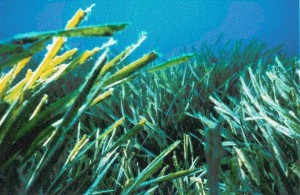Australian scientists discovered the oldest living thing on earth
Tuesday, February 14th, 2012 5:22:57 by Zeeshan Gohar
Australian scientists discovered the oldest living thing on earth
Scientists from the University of Western Australia have discovered the most ancient and the oldest living thing on earth. These Australian scientists believe that the giant seagrass patches
in the Mediterranean Sea are the oldest living thing on earth. The founders reckon that these seagrass patches that they found in the Mediterranean Sea are approximately up to 200,000 years old.
The Australian scientists came to the decision of naming the Mediterranean Sea seagrass patches the oldest living thing after they sequenced the DNA samples of Posidonia oceanic, the giant
seagrass, from 40 underwater meadows in an area from Spain to Cyprus spanning more than 2,000 miles on each side.
This recent findings have been published in the journal PLos ONE. According to these discoveries, the seagrass found in Mediterranean Sea is 12,000 to 200,000 years old and on average,
it is most likely to be at least 100,000 years old. This discovery is far older than Tasmanian plant which is considered to be 43,000 years old and was believed to be the oldest species before this new discovery.
Prof Carlos Duarte of the University of Western Australia told The Daily Telegraph, They are continually producing new branches. They spread very slowly and cover a very large area giving
them more area to mine resources. They can then store nutrients within their very large branches during bad conditions for growth.”
He added, “If climate change continues, the outlook for this species is very bad. The seagrass in the Mediterranean is already in clear decline due to shoreline construction and declining
water quality and this decline has been exacerbated by climate change. As the water warms, the organisms move slowly to higher altitudes.”
Prof Duarte also said that the Mediterranean is locked to the north by the European continent. The seagrass has been able to reach such old age because it can reproduce asexually and generate
clones of itself. Organisms that can only reproduce sexually are inevitably lost at each generation. The Mediterranean span of the seagrass patches is almost 10 miles and their weight is more than 6,000 tons.
Short URL: https://www.newspakistan.pk/?p=12702

















